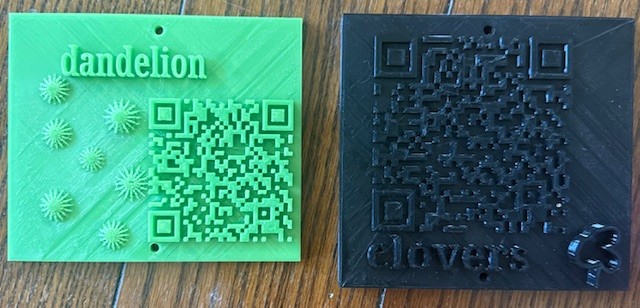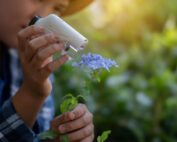Engaging Digital Natives Through Literacy, Outdoor Learning, and Technology
Erik Vreeland, Washington County Public Schools
Newt, bramble, acorn… If you consider yourself a nature enthusiast, these words might be part of your vocabulary. However, for many children, they are not. That is the premise for MacFarlane and Morris’s (2018) book, The Lost Words: A Spell Book. “The book began as a response to the removal of everyday nature words – among them “acorn”, “bluebell”, “kingfisher” and “wren” – from a widely used children’s dictionary, because those words were not being used enough by children to merit inclusion” (Macfarlane & Morris, 2017).
This collection of acrostic poems and beautiful illustrations inspired the exploration of our schoolyard through poetry, nature journals, and digital tools in the Library Media Center. This past school year, I had the opportunity to meet with a group of fourth and fifth graders for 30 minutes a week for a “Green Team.” These students selected this club because they all wanted to spend more time outdoors and learn more about nature.
We started the year reading some poems from The Lost Words: A Spell Book and unsurprisingly, many of the words were new to the students. We spent a lot of our outdoor time in the school courtyard observing plants and insects that we came across. I wanted students to gain a deeper understanding of the plants that lay underfoot and often go unnoticed. My belief was if students could put a name to the plants we see every day, they would start to appreciate and care for our local environment more. I know that most students, even these nature loving ones, often gravitate toward new and innovative technologies when they are available.
Our exploration began with the use of digital microscopes to take a closer look at some common plants that we often call weeds, including clover and dandelion. Students recorded their observations through note taking and drawings in their nature journals. As the year progressed, I asked students to pick one plant to focus on for a writing project. Students worked in groups to combine their digital photographs, nature drawings, research, and acrostic poems into one final digital publication. In an effort to help other students become familiar with these plants that we see on a daily basis, the students decided that they wanted to share their presentations with others.
 |
To make our courtyard more interactive and engaging for students, we opted to share the students’ work with QR codes that could be scanned while outside seeing the plants first hand. Using the 3D printers that have been very popular with fourth and fifth grade students, we created signs that labeled the plants and showed a scannable QR code to access more information. While we are fortunate to have 3D printers that made the final publication exciting, the real joy for these students came from explorable an area that they have seen many times, only this time we stopped to take a closer look at our surroundings. Through the careful examination of the schoolyard, these students found a new appreciation for the little things that often get overlooked.
Share
LATEST RESOURCES
Construction of an Outdoor Learning/Flex Space
Construction of an Outdoor Learning/Flex Space
Scott Fortney
Loudoun County Public Schools […]
Engaging Digital Natives Through Literacy, Outdoor Learning, and Technology
Engaging Digital Natives Through Literacy, Outdoor Learning, and Technology
Erik […]
Pages to Puddles: Story Walks as a Creative Tool for Assessing Stormwater Knowledge
Pages to Puddles: Story Walks as a Creative Tool for […]






